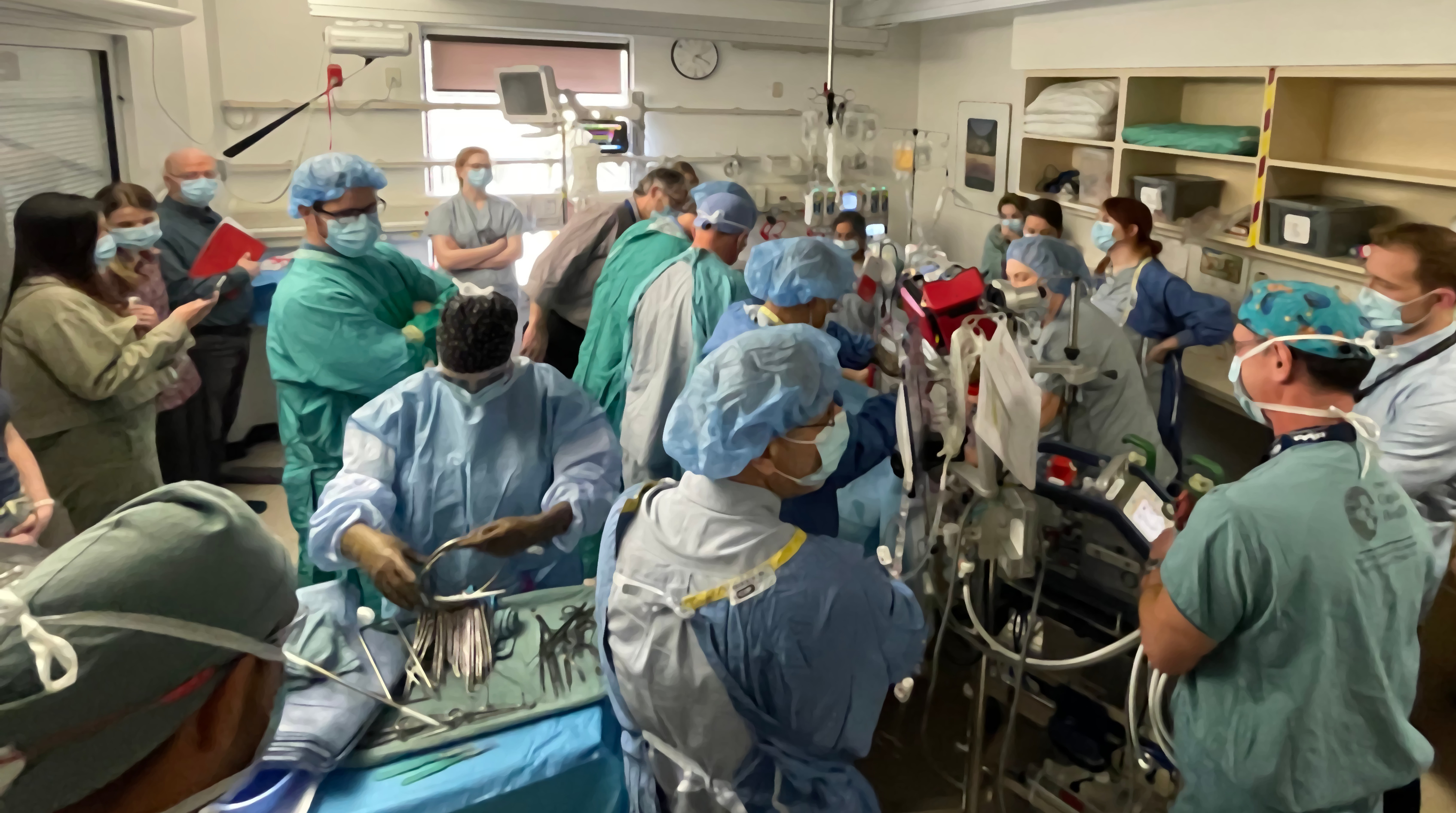Simulation
Dr. Janek Senaratne
Director - Simulation
The Department of Critical Care Medicine in conjunction with the Faculty of Medicine and Dentistry, University of Alberta, Alberta Health Services, and Covenant Health runs an interdisciplinary, interprofessional, and interhospital simulation program. The simulation program is an integral part of the department’s clinical, educational, research, and quality improvement/assurance missions.

Simulation in the Clinical Sphere
In conjunction with both Alberta Health Services and Covenant Health, the Department of Critical Care Medicine runs multi-disciplinary full-team in-situ simulations in all the Critical Care Units in the Edmonton Zone on a regular basis. These involve all members of the clinical team including attending physicians, nurse practitioners, residents, nurses, respiratory therapists, pharmacists, etc. and typically involve multiple high acuity low occurrence events. The simulation curriculum is designed as a part of regular in-servicing for all staff and serves as an opportunity to work on team skills that are difficult to otherwise learn in non-simulated settings. The simulations occur in-situ with all regular equipment and bedspace being used so as to identify concealed hazards and logistical issues. The simulations regularly involve other non-critical care teams (e.g. surgery, diagnostic imaging, extracorporeal life support, mechanical circulatory support) and often include simulations of the critically ill patient in non-unit environments such as during transportation, the operating room, the radiology department, and the cardiac catheterization laboratory.
Simulation in the Educational Sphere
In conjunction with the Faculty of Medicine and Dentistry, the Department of Critical Care Medicine runs a full simulation program directed towards medical students, residents, and fellows. At the medical student level, the Department of Critical Care Medicine supports simulation for incoming medical students during their Link Block between second and third year with both procedural, point-of-care ultrasound, and theater-based team simulation. Moreover, simulation resources are directed towards first and second year medical students in collaboration with the Critical Care and Trauma Medical Student’s Club with early procedural skills. At the resident and fellow level, the Department of Critical Care Medicine runs a full bootcamp for all Critical Care Medicine residents and fellows that include task-trainer procedural simulations, advanced Basic Life Support and Advanced Cardiac Life Support courses, as well as a longitudinal annual full-team in-situ simulation curriculum that takes place in the critical care units. This is supplemented with specific ventilation, hemodynamics/mechanical circulatory support, and renal replacement therapy bootcamps on an annual basis. The Simulation curriculum is built within the framework of the Royal College of Physicians and Surgeons Competence-by-Design (CBD) program allowing for the achievement of Entrustable Professional Activities (EPAs) within simulated environments.
Simulation in the Research Sphere
Given the expertise of the Department of Critical Care Medicine in Simulation, our Faculty are engaged in both primary and secondary research specific to simulation. Primary simulation studies look at simulation and its effects pre/post- implementation on staff, resident, and student learning, expertise, procedural competence, and efficiency. The Faculty has also been engaged in writing position papers on Simulation and its need in the modern Critical Care Unit. We are also involved in Innovation with our collaboration with eSIM with the design and building of new in-house simulators to increase the fidelity of simulation.
Simulation in the Quality Improvement and Quality Assurance Sphere
Simulation is an integral part of the continuous circle of Quality Improvement as one potential tool that can be used in modern health care systems to improve systems processes as well as patient safety. The Department of Critical Care Medicine has made Patient Safety and Quality one of its forefront missions with several faculty having specific training in this area. Simulation goes hand-in-hand with the process of Quality Improvement and allows for training and assessment in a low-risk environment that simulates the very high-risk landscape of critical care. The Department of Critical Care Medicine also uses simulation as a part of Alberta Health Services’ Quality Assurance Reviews as a potential tool to allow for measurable change of the health care system for complex systems and patient interactions. Finally, as a part of our goal to improve all health care delivery, the Department of Critical Care Medicine has provided simulation instruction training to other divisions and departments to build leaders in those areas to build their own robust simulation programs.